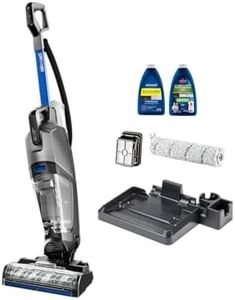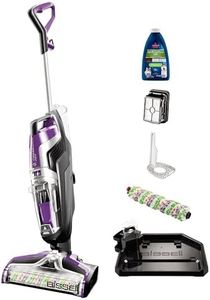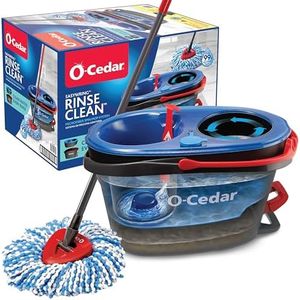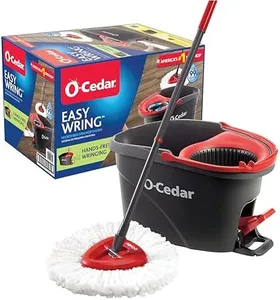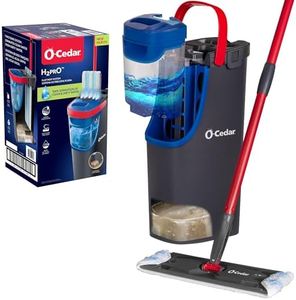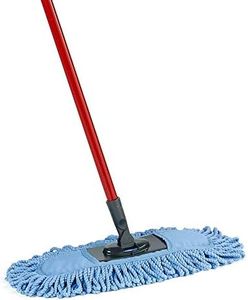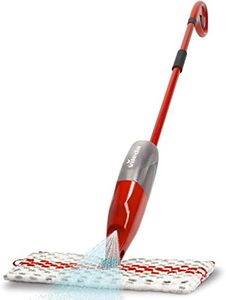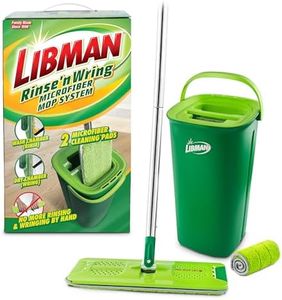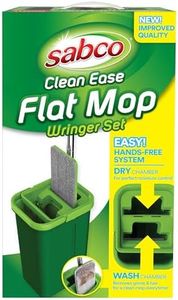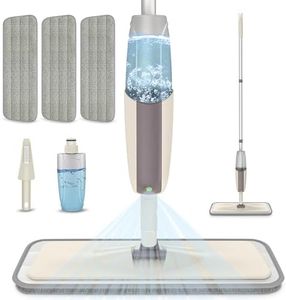We Use CookiesWe use cookies to enhance the security, performance,
functionality and for analytical and promotional activities. By continuing to browse this site you
are agreeing to our privacy policy
10 Best Commercial Mops
From leading brands and best sellers available on the web.By clicking on a link to a third party's website, log data is shared with that third party.
Buying Guide for the Best Commercial Mops
Choosing the right commercial mop is important for efficient cleaning in businesses, schools, healthcare facilities, or any place requiring regular floor care. The right mop can help you clean faster, with less effort, and achieve better hygiene results. It's important to consider your cleaning environment, the types of messes you deal with, the size of your cleaning area, and how often you'll be using the mop. Understanding the key specifications will help you match the mop to your daily needs and ensure long-lasting performance.Mop Head MaterialMop head material determines how well the mop cleans, absorbs liquid, and resists wear and tear. Common materials include cotton, microfiber, and blended fibers. Cotton is highly absorbent and good for general cleaning, but takes longer to dry. Microfiber is excellent for trapping dirt, requires less water and chemicals, and is quick-drying—making it suitable for healthcare or high-traffic areas. Blended fibers try to balance absorbency with durability. If you need quick drying and superior dirt removal, microfiber is a good choice. For heavy-duty or absorbency, cotton or blends might work better, but consider your cleaning frequency and hygiene needs.
Mop Type (Wet vs. Dry)There are wet mops, which are designed for scrubbing and cleaning up liquid spills, and dry mops, which are best for dusting and removing dry debris. Wet mops loosen and clean up grime, and are best for kitchens, bathrooms, and healthcare settings. Dry mops, often called dust mops, are ideal for sweeping hallways or large open spaces. Pick wet if you’re tackling spills or deep cleaning; dry if mostly removing dust or pet hair before a deeper clean.
Mop Head SizeThe size of the mop head affects how much area you clean at once—large heads make cleaning big spaces faster, while smaller heads are easier to maneuver in tight spaces or around furniture. For wide hallways or open floors, larger mop heads (over 24 inches) are more efficient. For offices, bathrooms, or areas with obstacles, smaller heads (10-18 inches) allow better control. Match mop head size to the average size and type of your cleaning areas.
Handle Material and LengthHandles are typically made from wood, plastic, or metal. Metal and heavy-duty plastic are more durable and lighter than wood. Handle length can vary—shorter handles offer more control, while longer handles are better for extended reach and covering large areas with fewer strokes. For taller users or large spaces, a longer handle reduces bending and fatigue. For smaller rooms or detailed work, shorter handles are easier to manage. Consider who will use the mop and in which settings.
Mop Head AttachmentAttachment refers to how the mop head connects to the handle—clip-on, screw, or banded loops. Clip-on and screw heads are easy to change and secure; this is important if you'll be replacing heads frequently, for example in places with strict hygiene practices. Banded loop mops last longer and don’t fray easily. If you need to change mop heads often for sanitation, pick an easy-attachment style. If durability is more important, look for reinforced banded loops.
Wringer CompatibilityCommercial mops are often paired with wringer buckets. The mop and wringer must be compatible in size and design, as some mop heads are too large or too absorbent for standard wringers. Some mops are designed specifically for use with down-press or side-press wringers, which affect how thoroughly the mop is squeezed out. If your area has specific wringer buckets, check for compatibility to avoid frustration and ensure effective wringing.
